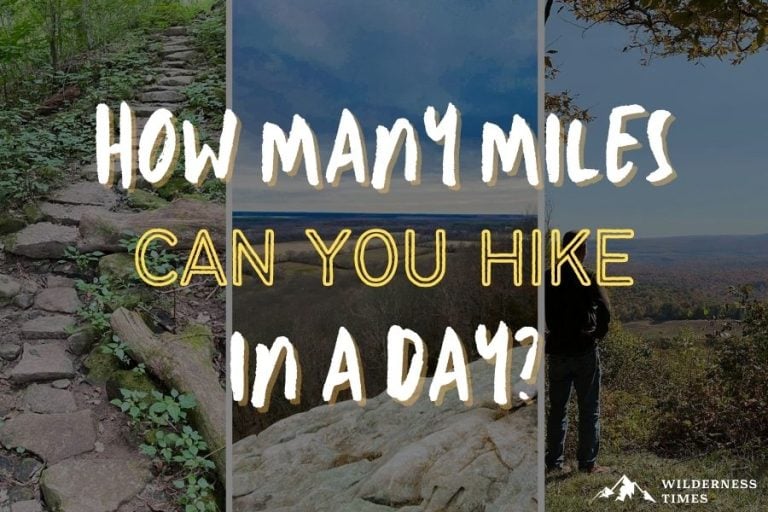There are many different answers on how many miles you can hike in a day.
Some hikers can do a few miles daily, while others can do significantly more.
It depends on a few factors based on your ability to hike longer distances.
These factors include physical and mental factors.
It also depends on how much time you have to invest in hiking.
Many of us would love to hike more than usual, but life’s obstacles and responsibilities get in our way.
But then some people have let all that go to become somewhat of career hikers, and their lives are better because of it.
There is no one size fits all answer for how many miles you can reasonably expect to hike in a day, but here is my general recommendation:
- Beginner hikers should start slow and aim to hike between 1 to 3 miles per day
- Intermediate hikers should aim for hikes between 3 to 6 miles per day
- Very fit, experienced hikers will be able to hike between 7 to 15 miles per day
- Extremely fit, serious hikers may be able to hike between 15 to 25 miles per day
How Far Should I Hike In a Day?
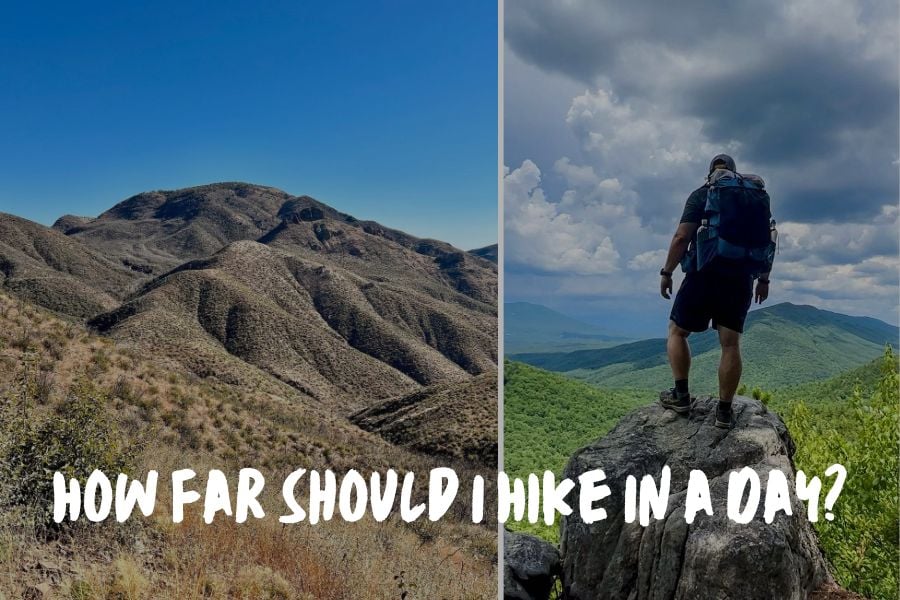
There is no right answer to this question. On average, me and my significant other hike anywhere from 5 miles to 7-10 miles each day.
We usually only get to hike on weekends. When it gets warmer, we might add a night hike day in the middle of the week or a few days of 20 miles bike rides on a local rail trail.
If you’re starting out, keep it under 3 miles.
If you’re an average hiker, stick to a 3 to 6 mile trek.
For seasoned hikers like me, you can go longer, between 7 to 15 miles.
And lastly, serious thru-hikers can range between 15 to 25 miles per day.
HIKING EXPERIENCE | DAILY MILEAGE |
BEGINNER HIKER | 1 to 3 miles |
INTERMEDIATE HIKER | 3 to 6 miles |
EXPERIENCED HIKER | 7 to 15 miles |
EXTREMELY FIT THRU-HIKER | 15 to 25 miles |
BUT just because thru-hikers are typically better at hiking longer distances doesn’t mean they do 20+ miles daily every day.
Everyone has to have a zero-day now and then, and hiking 20+ miles every day isn’t as easy as it sounds, even for the most experienced and seasoned hikers.
I plan my multi day hikes at around the 14 mile per day mark. I’ve walked further but tbh I get to about 18 miles and it ceases to be enjoyable from then on!
— Rusty_Outside (@Rusty_Outside) March 1, 2023
Factors That Make a Hike “Long”
As I talked about above, many factors play a role in your ability to hike longer.
Many of the factors require experience and time to improve. The only way to get better at something is to gain skills.
The same goes for hiking. You get better as you keep doing it.
Of course, you have to improve your skills correctly because there is a wrong way of doing it which can lead to negative results.
Fitness Level
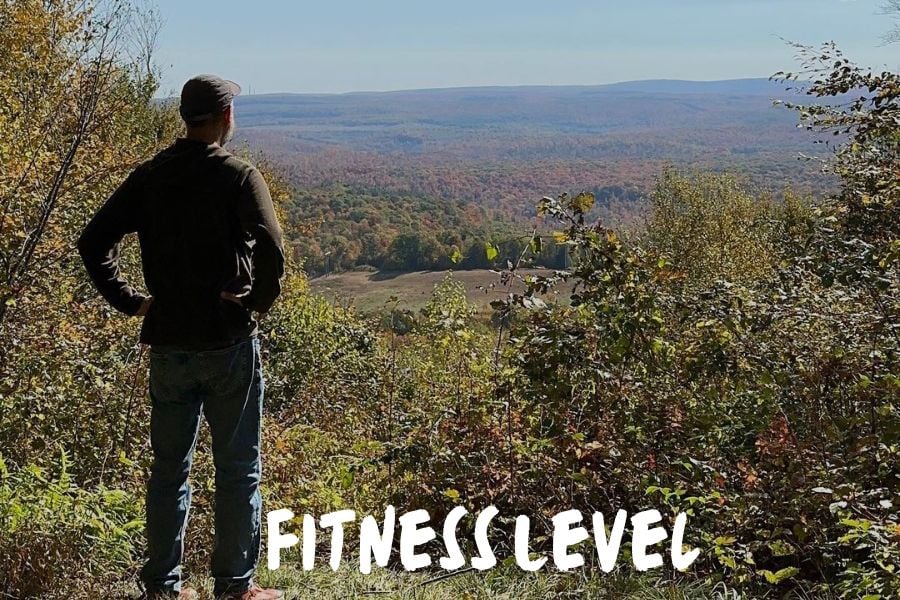
Your fitness level greatly affects how many miles you can hike in a day.
Hiking isn’t just a walk in a park. It’s usually harder because of uneven terrain, hill grades, and rugged environments.
I hike in the Shawnee National Forest. It’s made up of rolling hills and rugged hiking trails. It sometimes feels like a full cardio workout after I’m done hiking a trail.
When I first started hiking, my fitness level was zero, and I quickly felt the miles.
Now that I’ve been hiking for over a decade, it takes a while for me to “feel it” after a long hike.
Elevation

The elevation is a big factor when it comes to hiking. I was a cyclist before I was a hiker, and I still am.
On a bike, you quickly understand the difficulties of elevation gain. Hills aren’t as easy as many might think.
It’s the same way when traveling up them in hiking boots.
It takes your body more effort to get up and down hills. Your fitness level plays a big role in elevation obstacles during longer hikes.
Sometimes it’s best to work yourself up to the ability to hiker higher elevated trails rather than go all out from the start.
Experience

The best way to become an experienced hiker is to gain experience.
I started by hiking short trails at my local state parks. I’d hike the same short trail until I knew it by heart.
Then I’d move on to the next trail. I would go for harder trails each time to gain more experience. It’s the best way that I have found to gain experience as a hiker.
That was over ten years ago. Nowadays, I’m not afraid to take on any trail in my area.
But even as the seasoned hiker I am, I have no mountain hiking experience, so I would have to start small in that area, too.
Experience always goes a long way in being able to hike longer distances.
Age
Sometimes age can play a role in the ability to hike longer distances. However, sometimes age isn’t a factor as long as other factors are tended to.
I’m in my 30s, and those are prime years to be able to hike long distances.
But I know hikers in their 70s and 80s who can thru-hike our local 160-mile River to River Trail. But they’re in excellent shape, and their fitness level is high.
You couldn’t expect a child of 10 years old to be able to thru-hike the whole trail day after day.
At 10 years old, you might have a lot of stamina and energy, but that doesn’t mean you have the fitness level to hike long distances like a 30-year-old can.
Age plays a factor, but I think fitness and experience override the misconception that an aging person can’t hike as well as a younger person.
Medical Factors
Medical factors are the type of factors that need to be taken very seriously. If you have medical issues, check with your doctor before hiking easy, shorter trails.
Sometimes some medical conditions require less strenuous activities to remain healthy. Some conditions might cause issues to worsen if you attempt to hike longer distances.
But other conditions might improve after you start hiking more.
It’s important to consult with your medical provider about your long-term hiking plans and use their advice.
Hiking should be a good thing, not something potentially dangerous for you to attempt.
Backpacks
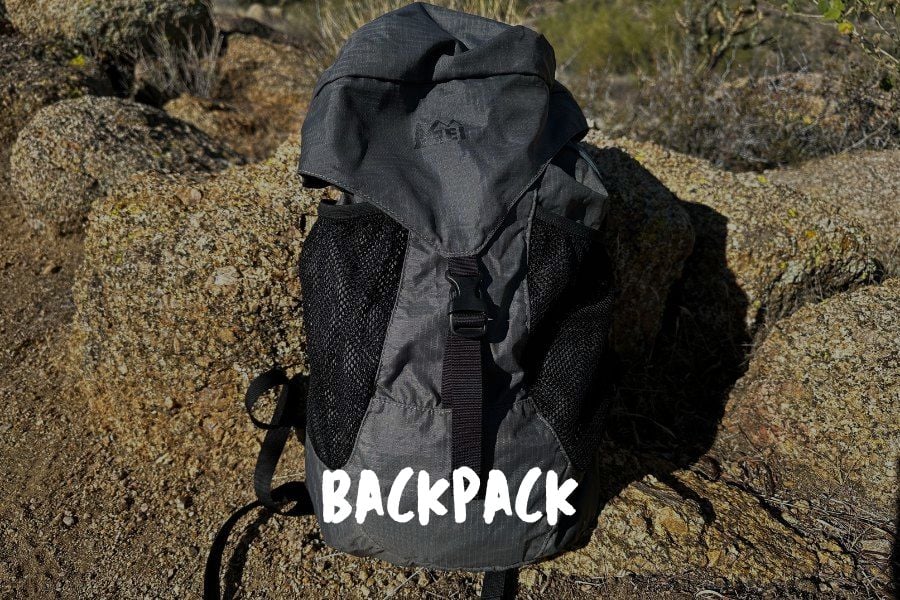
Believe it or not, backpacks can significantly affect how many miles you can hike in a day.
A lighter backpack option and gear amount would be ideal for someone who wants to cover longer distances.
Carrying heavy items for a long time might cause much pain and discomfort. The style and construction of the backpack also tend to matter.
I couldn’t imagine hiking 20 miles with my 84-liter backpack.
I might be able to do it with my 34 liters, but I’d still have to focus on taking less gear unless I wanted to feel it later on after the hike.
An ultra-lite backpack option and gear types might be what you’d want to go with for long-distance hiking.
Average Distance for Different Types of Hikers
There is no one type of hiker. There are many different types of hikers and hiking abilities.
I’ve been hiking for over a decade. Locally, most people consider me an expert hiker.
Personally, I don’t think I could easily thru-hike a trail like the AT or PCT like other more seasoned thru-hikers and trekkers can.
I feel like I would have problems doing it. I would need way more training than what I get now.
But I feel like I could hike any trail in the Shawnee National Forest because I’m used to hiking there.
Beginner hiker
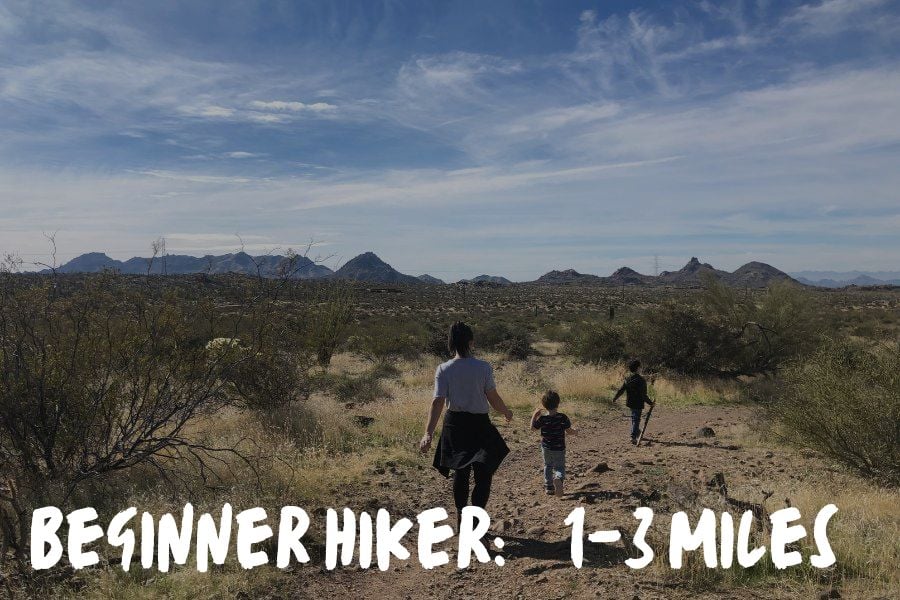
A beginner hiker should focus on shorter-distance hiking trips, between 1-3 miles or less
If you’re new to hiking, the last thing you want to do is overdo it and burn yourself out. I couldn’t imagine not liking hiking after trying it.
It has essentially saved my life again and again over the years.
But I ensured that I didn’t burn out from the start by starting slow and small.
Try focusing on the shortest and easiest trails in your area.
For me, it was state park trails that were 1 to 2 miles or less long.
I also stuck with loop trails, too. The more I got out for a hike, the more I’d up the number of miles. And don’t feel like you need to go every day as fast as you can.
Go hike on weekends or your free days and take it slow. Stop and smell the flowers, snap photos, and take it all in.
Also See: Hiking For Beginners: Essential Tips To Get Started
Average/Intermediate hiker
12 miles, I personally prefer 5 miles a day. pic.twitter.com/I6zJb9r8qK
— Kirk ☮️ (@captinkirk60) February 28, 2023
An average hiker would be someone who can go out and hike reasonable distances, between 3 to 6 miles per day.
Usually, an average hiker would hike on the weekend or on the days available for them to hike.
An average hiker is usually more knowledgeable of trail conditions and can judge which trails to choose based on their abilities and fitness level.
Average hikers tend to stay on well-marked trails.
Becoming an average hiker is easy if you start out small and work your way up as a beginner.
Little by little, you adjust the mileage and level of difficulty as you’re physically and mentally able to do.
Very fit, experienced hiker
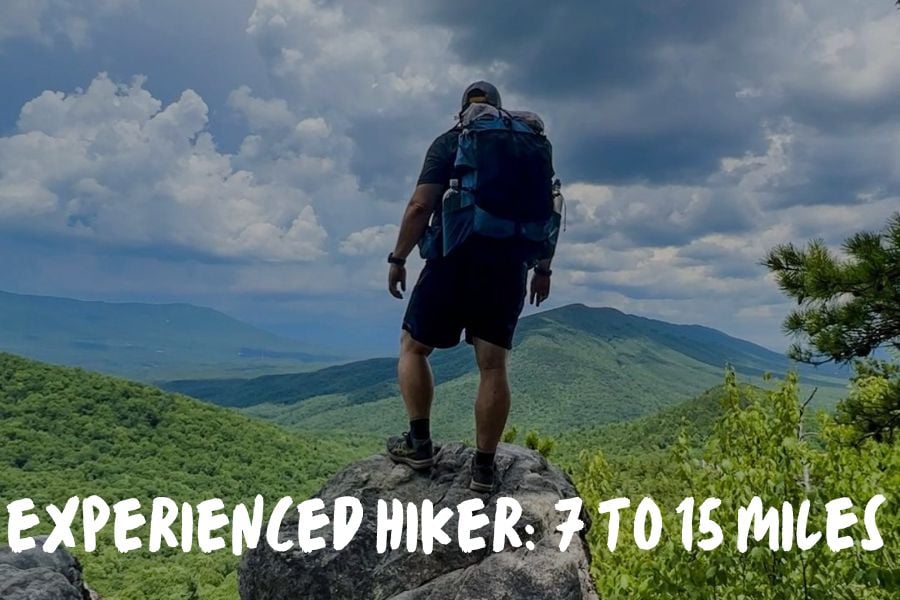
Very fit, experienced hikers can hike between 7 to 15 miles per day.
This is the category that I would put myself into. I can hike every day I can.
My rest days would be a bike ride or a shorter, easier hike in a state park.
On average, I typically hike 7 to 10 miles each time.
The most I’ve hiked in one day was 20 miles. Although sore, I got back out and hiked the next day.
I’m a hiking guide, and I lead new hikers on more challenging hikes. I can hike any trail in my area and go off-trail quite a bit.
I know how to read maps and typically enjoy hiking up hills and ridgelines to strengthen my hiking abilities. It took me about ten years to get to this level of hiking fitness.
Extremely Fit, Serious Thru-Hiker
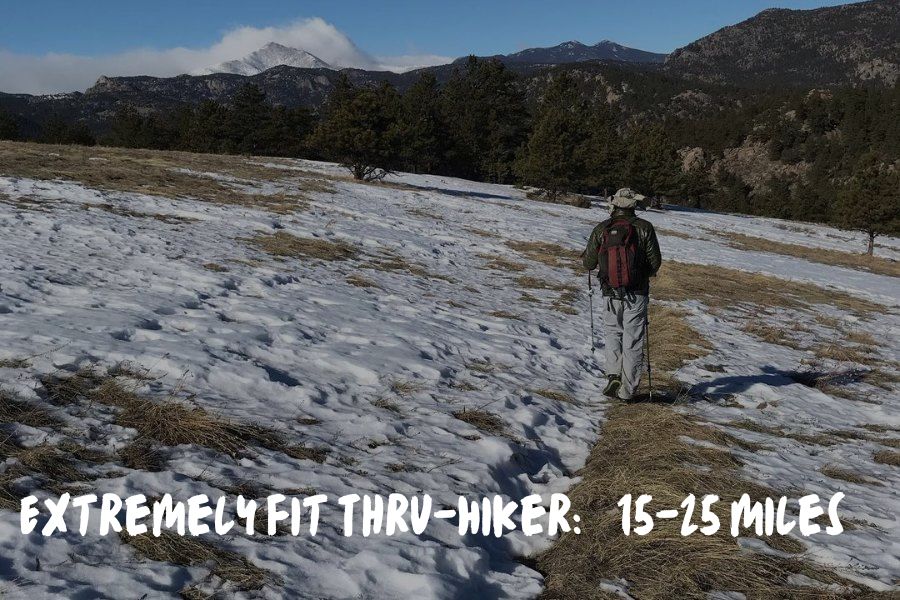
These people live for hiking. They’re the AT thru-hikers. They hike the AT and then move on to the next big trail system.
Extremely fit, serious thru-hikers can hike 15-25 miles per day.
I dream of becoming a thru-hiker one day, but I know it would take so much more discipline and fitness commitment from me.
I could thru-hike our local 160-mile trail, but it would be tough. I could only imagine trying to thru-hike the AT, PCT, or CDT.
Getting to this hiking fitness level is possible for most hikers, but it will take consistent work and fitness strengthening for anyone who wants to get to this level.
Have hiked over 20 miles per day on recent trips. 18 miles seems like a sweet spot. Heavily dependent on terrain and hours of daylight though.
— Justin_Hikes (@justin_hikes) February 28, 2023
Advantages of Long Hikes
Longer hikes have many advantages.
They do remarkable things to our bodies and fitness levels. They do remarkable things to our minds and health, too.
They make you appreciate nature more than you ever have before. You become more connected with the natural world because you’re exposed to more of it.
You can make better decisions based on the environmental elements around you.
It’s safe to say there are more advantages than disadvantages to longer hiking trips.
Hiking improves balance
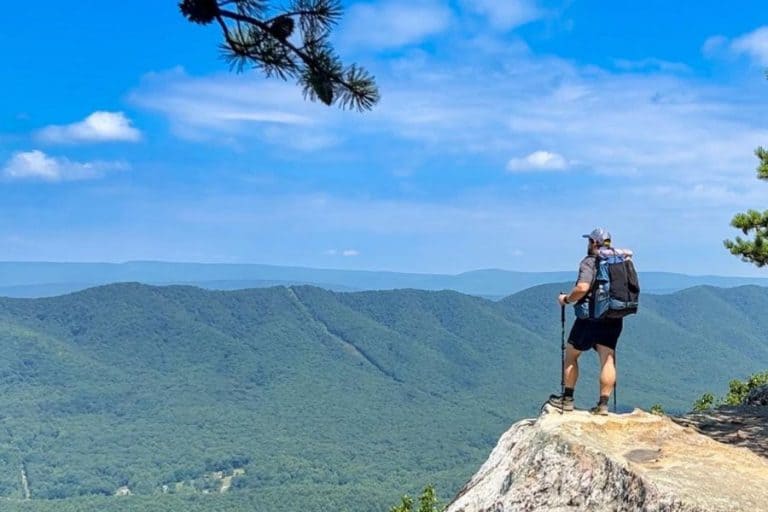
Hiking does a lot of good things for your health and stability. One advantage of hiking is that it improves your ability to balance better.
The more you walk, the better your balance becomes. Many of us have evolved to jobs where we sit more than we move.
Unfortunately, we lose important natural things such as balance and stamina.
When you hike, you not only move your body, but you have to overcome obstacles like uneven terrain, rocky areas, and creek crossings.
You might need the assistance of trekking poles, but either way, it will make your balance a lot better than before.
Hiking helps build muscle
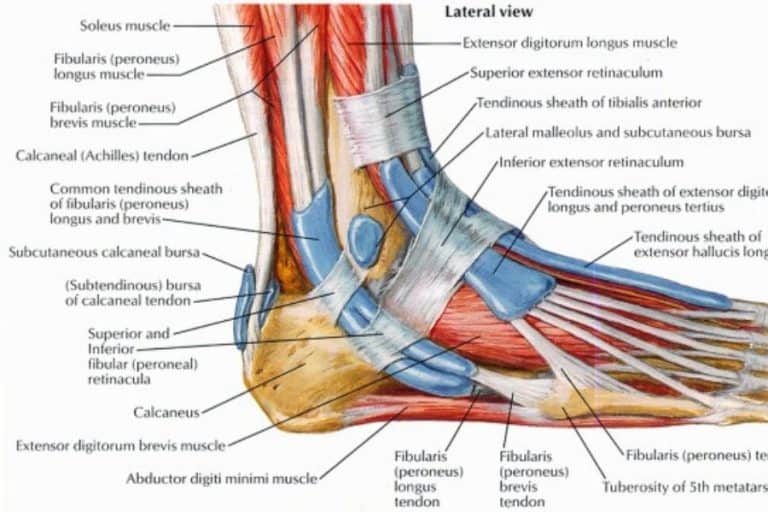
I started hiking initially to help strengthen my lower body for cycling. Cycling builds my muscles, but I don’t like biking too long when it’s cold.
Instead, I focus on longer and hillier hikes in the winter months. This has developed my leg muscles stronger than they’ve ever been before.
Thanks to my hiking efforts, hills are a lot easier for me on a hiking trail and on a bicycle.
When you throw a backpack on with weight, you’re willingly giving your body strength training which will help you develop more muscle, especially in the lower portion of your body.
Hiking can increase bone density
When you advance from a beginner to an average or seasoned hiker, you start to take on more strenuous and moderately rugged hiking trails.
When you hike these moderate to higher difficulty levels, you help build your bone density. This is especially the case on moderately difficult, uneven, and rocky trails.
Easier, flat trails are less effective in strengthening bone density than harder trails.
Because of that, it’s important to work on becoming a more seasoned hiker and taking on harder trails.
Hiking helps with weight loss
Hiking has helped me lose weight time and time again.
Like any fitness type, your dieting routine matters for weight loss. But activities like cycling, running, and even hiking will help you start to lose unwanted weight.
In the case of hiking, focusing on harder trails and hillier routes will be the best way to lose weight.
And while I mentioned your diet matters, you still need to ensure you’re drinking and eating the right way when hiking harder trails.
Your body must have extra fuel and hydration put in it during the activity, or it could be hazardous to your health.
FAQs
Let’s look at frequently asked questions about how many miles you can hike daily.
How long can an average person hike every day?
Every hiker is different. Many questions must be answered to determine how long an average person can hike a day. How is the health of the person?
Are they new to hiking? Do they have any medical conditions that would make longer-distance hiking dangerous?
A beginner should always start small and work their way up (1-3 miles per day).
In most cases, an average healthy person should be able to hike 5 to 10 miles daily. However, there will always be factors to judge that observation.
Is there a recommended amount of hiking time?
Not really. It’s recommended that you hike the number of miles you can physically and mentally.
If you start to hurt and become uncomfortable from hiking longer distances, it might be a sign to slow down. It’s best to hike the amount that you’re capable of at the moment.
As you gain experience and strengthen your body, you can experiment with hiking longer distances.
When it comes to pain, there is good pain and bad pain. Bad pain sticks around for a while.
Good pain is just your body not being used to being pushed a little harder each time. You can usually tell the difference quickly.
How far do you actually want to hike?
If you’re section or thru-hiking, you might have a schedule to keep for hiking distances per day.
Maybe you only have a certain number of days to be on the trail.
Proper planning must occur before you start hiking if that’s the case. And there is no good excuse to overdo it and potentially get injured.
If you’re just day hiking or doing a quick multi-day hike, you should aim to finish the hike in a reasonable amount of time.
Choose a trail with a reasonable start and finish and aim to complete it.
Keep track of your mileage with a hiking app.
I use Strava to watch my miles, but there are other great hiking apps too. Using one will help you determine the speed to adjust to take on more miles.
What about Long Distance Trails like the Appalachian trail?
Usually, trails like the AT and PCT require you to dedicate months to thru-hike them completely.
Some hikers only have a certain amount of time they can commit due to work or family issues.
Sometimes, you might have to hike 20 or more miles daily.
But there must be rest days when you’re not hiking; otherwise, it can harm your body and even injure you.
As I said above, longer hikes take a lot of logistical planning for them to be successful. This will also require a lot of training on the part of the thru-hiker.
Training may involve going to your local trails and hiking them several times a day throughout the week.
Thru-hikers don’t just hike a trail and move on to the next. Maybe some can, but most humans need to train to be effective.
How Long Does It Take To Hike 5 Miles?
A five-mile hike is a good average mileage goal for an average to seasoned hiker. The time it takes to hike five miles depends on your hiking speed and how many stops you take.
I’m a social media influencer for hiking in my area. I take many stops to take photos and videos to share with my followers.
A five-mile hike typically takes me three to five hours, depending on how many times I stop.
If I were in hiking mode and not stopping for multimedia purposes, I feel like I could hike five miles in less than three hours.
But that’s because I’m physically fit and have good balance and bone density to do it.
Also See: Calculating Average Hiking Speed And Why It Matters
Conclusion
This article has touched base on how many miles you can hike daily.
As you can see from the information above, it varies for different types of people and hikers.
It’s important to understand the factors above to do it correctly and not hurt yourself.


